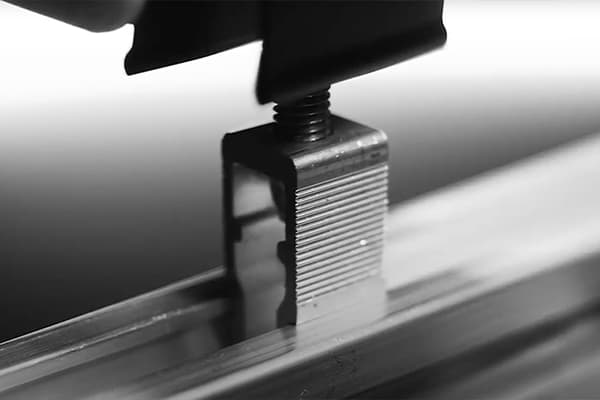
Schletter Presents 1P Tracking System in North America
The globally active solar mounting system manufacturer Schletter Group is presenting its latest products and solutions at RE+ 2022 in Anaheim, California. One of the highlights: the new 1P (one portrait) tracking system, which is being exhibited for the first time in North America. The GMax open-area system and the latest flat and pitched roof systems from the high-quality German manufacturer will also be shown at the trade show.
“Fewer kilos of mounting material for every square meter of surface covered yet with the same or better load-bearing capacity – this is a common thread running through our product development,” emphasized Tilman Elsner, Senior VP Engineering North America & Deputy Head Global Engineering. “With our new 1P tracking system in particular, we have taken another massive step forward in terms of the ratio of material to power."
Much lighter than comparable models in the market
In this way, the Schletter developers have optimized the reliable Schletter Tracker, which has been very successful in the market, specifically for easy configuration with ultra-large-format modules. The compact “1P” tracker system is optimized for configuration with on vertical-format module. It uses far less material per kilowatt of power and is much lighter than comparable models on the market. “This is a very crucial point at the moment, especially in view of the high cost of steel, logistics and transport,” explains Elsner.
As stable as a fixed installation
Yet the 1P tracker has the same design advantages as the existing Schletter 2P (two portrait) tracking system. The system works with a patented mechanical self-locking mechanism: In the drive train, there is a Geneva drive at each post that automatically locks the module table at any tilting angle. This mechanical locking system effectively prevents wind-related vibrations (known as the ‘galloping effect’) through the entire range without expensive dampers or similar options needing to be used. In the resting position, the system therefore has the properties and load-bearing capacity of a fixed installation and can be configured for wind speeds of up to 260 km/h.
In addition, the system is optimized for bifacial modules and can be configured with XXL panels with a side length of up to 250 cm. In the further development of both tracking systems (1P and 2P), the latest wind tunnel reports in line with the latest technical and wind technology developments were prepared and considered.
Please accept the marketing cookies to be able to watch the video
GMax: large spans, few posts
The Schletter GMax fixed installation open-area system also embodies the concept of consistent material optimization. Thanks to intelligent geometry and high-strength steels, the single-post system achieves large spans and therefore requires comparatively few support posts per kilowatt of installed PV capacity. Thanks to its simple design, it can also be installed quickly and easily.
More flexibility and less ballast on the flat roof
In Anaheim, the Schletter Group will also be presenting its further refined FixGrid Pro flat roof system. With its improved aerodynamics in line with the latest wind tunnel reports, the system needs even less ballast than the classic FixGrid. In this way, with the optimized FixGrid Pro in east-west orientation, the planner can also decide freely where the maintenance aisle will be. “Our wind tunnel tests have shown that there are clear aerodynamic advantages if the maintenance aisle is positioned between the upper edges of the upright modules,” Elsner explained. “This means that up to 10 percent of the ballast can be saved. It also makes mounting the modules and wiring them much easier.”
In addition, the Schletter developers have further optimized the system using modular logic. Instead of different module supports depending on the angle of inclination, module size or type of configuration (upright or horizontal), all variants can now be realized with just a few universally applicable components. Firstly, this gives considerable advantages for wholesalers in terms of storage. Secondly, the systems can be planned and installed even faster and more flexibly: “Our new FixGrid Pro always allows an optimal support and clamping position for the module – no matter what the angle or size,” Elsner emphasized.
A full range for pitched roofs
Schletter is also showing the essential components of its pitched roof range in the USA for the first time. “In the European market, we have a high market share in the pitched roof sector and we want to offer our tried and tested range increasingly in the North American market too,” says Elsner. “At the moment, we are in discussions with a number of wholesale partners.”
With the ProLine pitched roof system, a new profile geometry allows for significantly less material usage than with the current Schletter standard profiles. At the same time, the profile can cope with higher loads. The ProLine profiles can also be installed without tools using a single internal connector, which saves time and costs during mounting. A new cross-rail connector ensures a structurally resilient installation. With the “RapidPro” module clamp, all standard module sizes with frame heights between 30 and 47 mm can be fixed throughout the pitched roof and flat roof range, on the principle of “one size fits all”. “Our wholesale partners therefore only need to keep one clamp in stock in the future, thus saving storage space,” Elsner emphasized.






